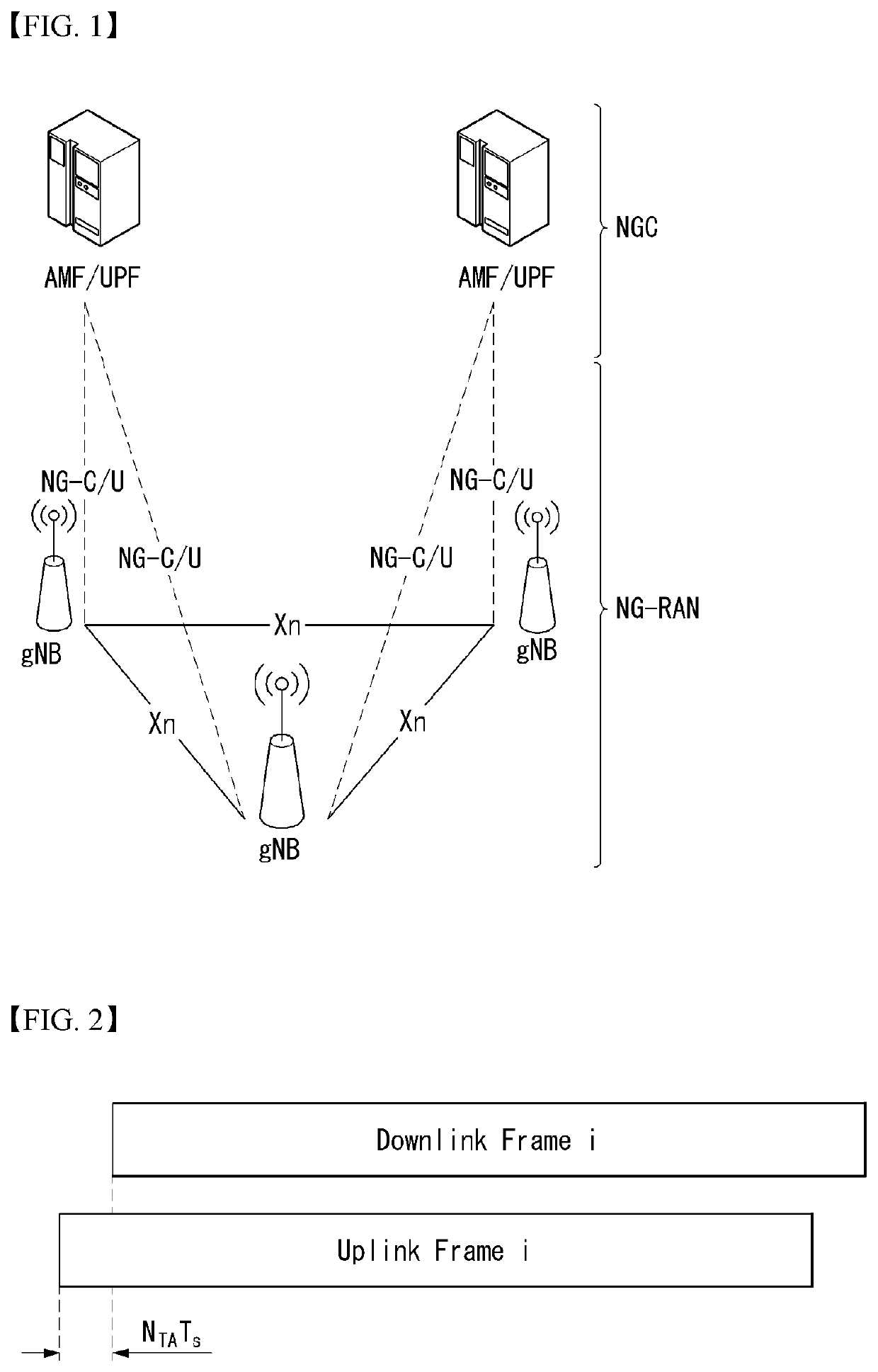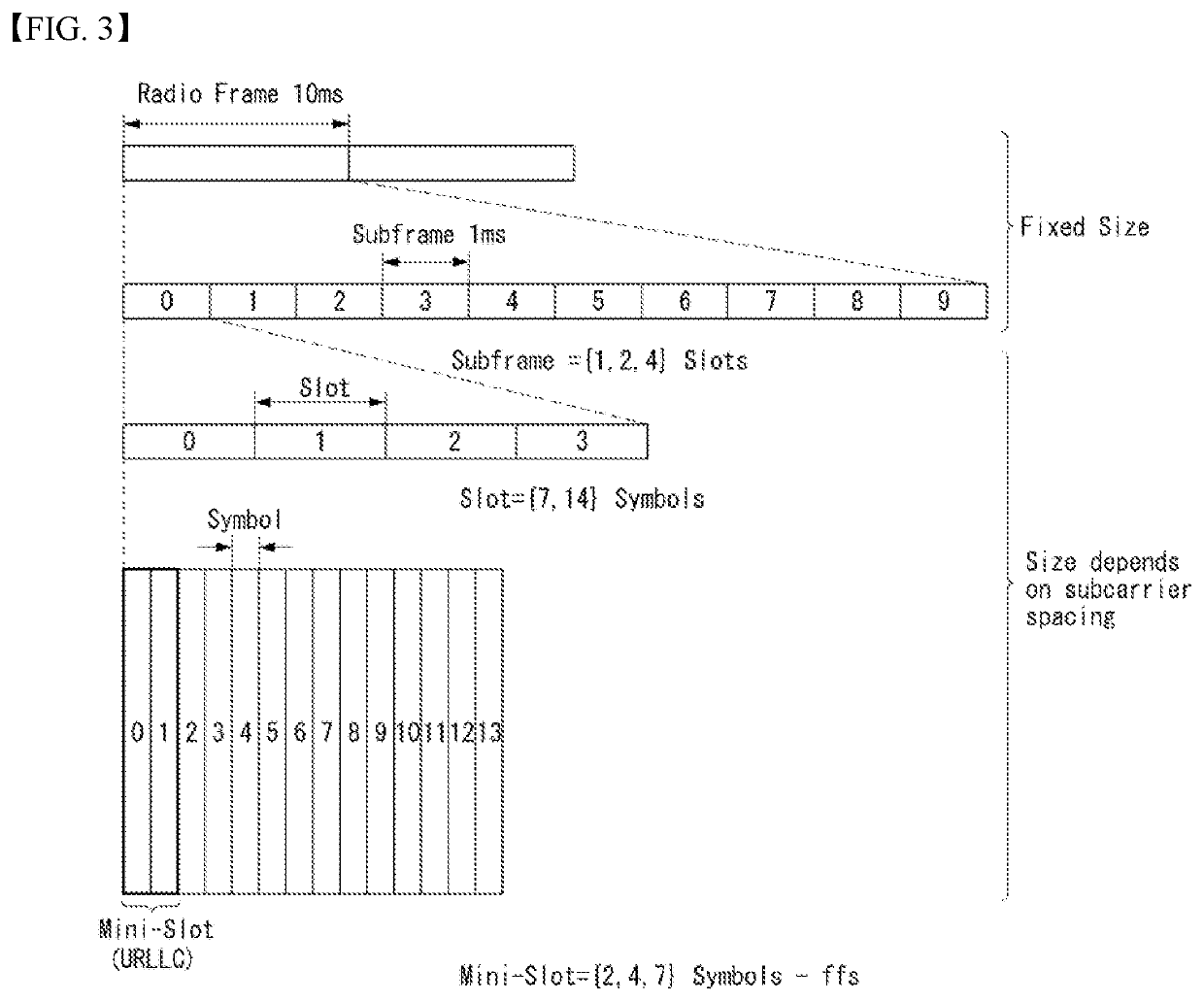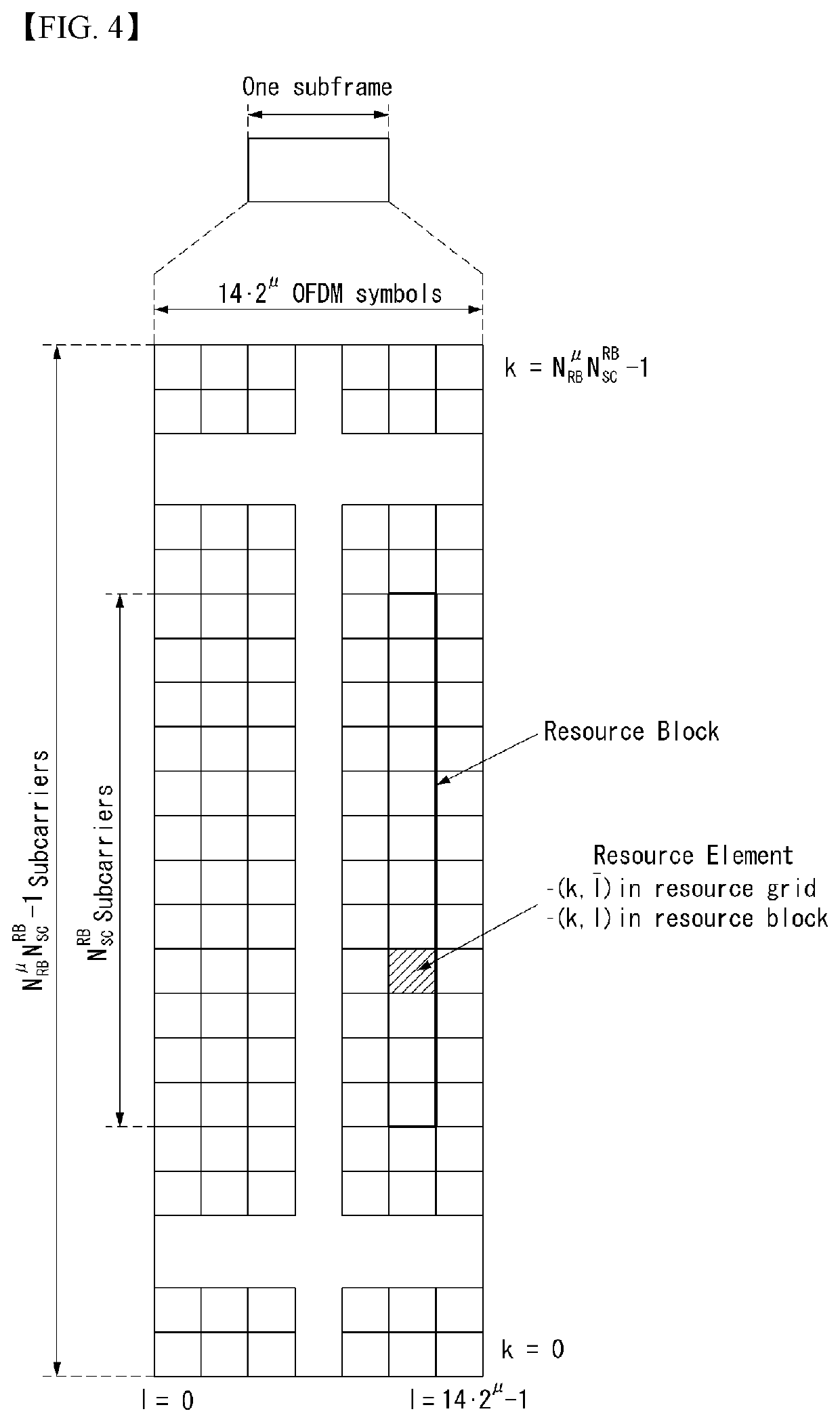Method for transmitting and receiving channel state information in wireless communication system and device therefor
a wireless communication system and channel state technology, applied in the field of wireless communication systems, can solve problems such as resource shortage, and achieve the effect of high size and/or granularity of the codebook, efficient transmission and reception of csi information
- Summary
- Abstract
- Description
- Claims
- Application Information
AI Technical Summary
Benefits of technology
Problems solved by technology
Method used
Image
Examples
first embodiment
[0130]In the present embodiment, a method in which the base station indicates the terminal to perform CSI feedback (i.e. CSI reporting) through a certain level of sophisticated codebook considering a trade-off between the PUSCH resource and the performance (i.e. sophistication) of the codebook will be described.
[0131]In particular, the present embodiment proposes a method in which the base station indicates a codebook to be used (or applied) to the CSI feedback of the terminal via an explicit method.
[0132]For example, the base station may trigger a specific reporting setting (i.e. CSI reporting setting), that is, a CSI reporting, for the terminal via downlink control information (DCI). The target triggered by the DCI may be an aperiodic CSI reporting (AP CSI reporting) or a semi-persistent CSI reporting (SP CSI reporting).
[0133]When the target triggered by the DCI is the aperiodic CSI reporting, the terminal may perform the aperiodic CSI reporting using resources (i.e. resource allo...
second embodiment
[0145]Unlike the first embodiment described above, the present embodiment proposes a method of indicating, by the base station, a codebook to be used (or applied) to the CSI feedback of the terminal through an implicit method.
[0146]For example, the base station may trigger a specific reporting setting (i.e. CSI reporting setting), that is, a CSI reporting, for the terminal via the DCI. At the same time, the base station may indicate information on PUSCH resource allocation for which the CSI reporting is to be performed. At this time, according to the size of the PUSCH resource allocated for the CSI reporting, the terminal may (self) determine the size and / or granularity of the codebook, and report a precoding matrix indicator (PMI) with the largest size and / or the highest granularity within a range not exceeding the allocated PUSCH resource.
[0147]In other words, the terminal may determine the size and / or granularity of the codebook to be used for the CSI reporting based on the size ...
third embodiment
[0154]As the size of the codebook increases, it may be difficult to report all CSIs via one PUCCH resource when the CSI is fed back via a PUCCH resource having a relatively small capacity. As an example, one PUCCH resource may mean a specific PUCCH resource unit allocated to the terminal.
[0155]In particular, in the case of subband (SB) CSI feedback (i.e. subband CSI reporting), the payload of CSI feedback may increase because PMI and CQI for each subband must be reported, and the corresponding CSI feedback may be difficult to be transmitted via one PUCCH resource.
[0156]In consideration of this point, the present embodiment proposes a method of dividing and transmitting the CSI via the plurality of PUCCH resources when the codebook size is large (e.g. type 2 codebook, subband CSI feedback, etc.). The plurality of PUCCH resources may be located and transmitted within one slot, or may be divided into a plurality of slots and transmitted with a specific period.
[0157]In the NR system, wh...
PUM
 Login to View More
Login to View More Abstract
Description
Claims
Application Information
 Login to View More
Login to View More - R&D
- Intellectual Property
- Life Sciences
- Materials
- Tech Scout
- Unparalleled Data Quality
- Higher Quality Content
- 60% Fewer Hallucinations
Browse by: Latest US Patents, China's latest patents, Technical Efficacy Thesaurus, Application Domain, Technology Topic, Popular Technical Reports.
© 2025 PatSnap. All rights reserved.Legal|Privacy policy|Modern Slavery Act Transparency Statement|Sitemap|About US| Contact US: help@patsnap.com



